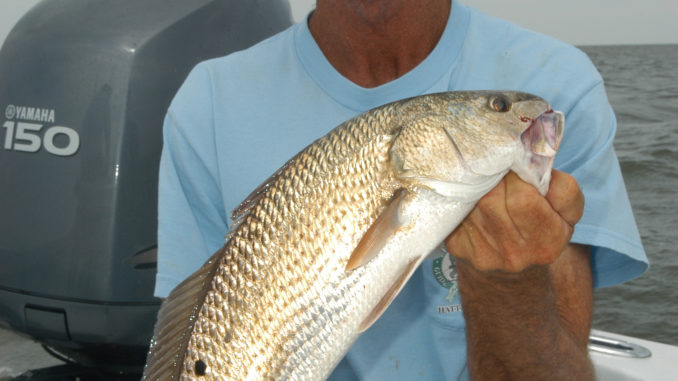
Off the beaten path, the Outer Banks’ best-known fishing village offers great inshore action.
Hatteras is one of those places you have to be headed for to get to. You can’t somehow wind up there by accident — at least not by wheeled vehicle. It might be possible to somehow arrive in Hatteras without planning by boat, but you would have to come by the ocean. Few people would be lucky enough to cross the Pamlico Sound successfully by accident. Many fishermen have enough difficulty doing it with the latest in marine electronics.
However, Hatteras is one of those places that forges a grip on your mind and heart and draws you there. It is both the curse of the siren and the blessing of Poseidon. Once a dedicated fisherman is introduced to the exceptional fishing at Hatteras, it becomes a part of him and draws him back.
Most fishermen first think of Hatteras as a destination for fishing offshore, and it is superlative in that manner. However, for those fishermen willing to shine their lower units and props on sandbars while learning their way around the inshore waters between Hatteras Island and the shoals and reefs that separate it from Pamlico Sound, there are numerous opportunities to catch limits of large inshore fish.
The road to Hatteras is simple. Get to Nags Head, and then go approximately 60 miles south on NC 12.
Land is precious in Hatteras village, which makes for only a couple of launching ramps. There are no free ramps and only two public ramps: at Teach’s Lair Marina and Village Marina — both in the village on NC 12. A fee ramp is also available at Scotch Bonnet Marina on NC 12 a few miles north in Frisco.
Ken Dempsey is not a Hatteras native, but he looks and is beginning to sound the part. Over several decades of living there, he has even developed a trace of banker’s brogue. Born and raised in Greensboro, Dempsey migrated to Hatteras after several years as a successful striper guide on Virginia’s Smith Mountain Lake.
He began his time in Hatteras mating for Capt. Steve “Creature” Coulter on the Sea Creature during the offshore season and guiding duck hunters during the winter. On his days off, Dempsey set about learning the inshore lumps, channels and sloughs and catching inshore fish. With his background as a striper guide, he understood the basics and picked things up quickly. It wasn’t long before he retired from the big charterboats to guide inshore fishermen, and his Ken Dempsey Guide Service has a good list of return clients.
Dempsey won’t say he has never looked back, but he says he smiles when he looks back. His specialty is leading clients to large red drum in Hatteras Inlet and Pamlico Sound, but he also regularly has clients limiting on speckled trout, gray trout, slot puppy drum, flounder and more. He was gracious enough to share a few tips on catching fish and some areas where the fish gather. Dempsey did warn that this area is criss-crossed with shoals and reefs, and fishermen should learn to read the water and move slowly and deliberately to avoid groundings.
1. Grass Point
35.14.11N/075.40.81W
If you discount that some of the Hatteras kids sometime fish in the harbor, this is probably the closest fishing hole to the Hatteras ramps. It is a sand point that extends from a marsh island at the northeast point of Hatteras village on the sound side. There is grass growing on the bottom, which attracts baitfish and begins the food chain. This point also attracts a few ducks during the winter.
“Fishermen need to understand that this is an area, not a small, specific spot,” Dempsey said. “There are probably 500 to 700 yards of bottom here that may be holding fish, so it might require moving a few times before finding where a school is holding. The depth varies from about 3½ to six feet, and they may be shallower early in the day and then move later. This is a good spot to catch fish, but you might have to look a while to find them.”
Dempsey said speckled trout are the primary catch here, but it isn’t a big surprise to catch a flounder or a red drum. Bluefish are sometimes thick, but this is a trout spot, and most fishermen use 3- to 7-inch soft plastics, twitching them across the bottom. Dempsey said there are so many small fish that natural bait gets pecked to pieces, often before a big fish gets curious. He also said this is a great spot to work early and late with topwater lures.
Capt. Ken Dempsey can be contacted at 252-986-2102 or www.kendempseyguide.com.
Editor’s note: This article is part of the Saltwater Series in the October issue of North Carolina Sportsman. Find out about eight more Hatteras hotspots by clicking here to download a digital edition of this issue right to your computer or smartphone.
Be sure to subscribe to ensure you don’t miss a single information-packed issue of North Carolina Sportsman.


Be the first to comment